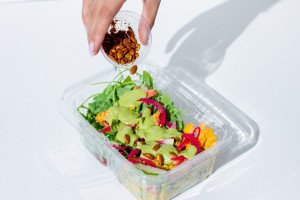No-Brainer Tips to Avoid a Food Poisoning Disaster at Your Fourth of July BBQ
Summer isn’t just the perfect time for to get your tan and grill on. It’s also the most common time to get food poisoning. No one wants to be the jerk that unwittingly gives everyone at the family picnic food poisoning, so I talked to Robert Czincila, ER chief at Einstein Medical Center Montgomery, about how to keep everyone safe at your next barbecue.
To start, Czincila recommends you pay close attention to these common culprits that have been known to cause more than a few outbreaks:
- Meat, beef and poultry, especially if they’re undercooked.
- Fish, like mahi mahi and tuna, that has spoiled can cause scombroid food poisoning.
- Mayonnaise, eggs, and milk left out in the heat.
- Potato salad: it looks so unsuspecting but if it’s out of the refrigerator for too long—watch out.
But most of the time, it’s more about the way the food is prepared rather than something innate in the food itself—so sorry guys, this one’s on you. Here are the common prep mistakes—and ways to avoid them—that will (hopefully) spare you from seeing Czincila at the ER this summer.
BBQ Blunder #1: Dirty Hands.
This is a big oops. According to Czincila, “Most foodborne illnesses come from food handlers,” which means the contaminated food at your BBQ may likely be your fault. The fix: soap and water. This one’s easy—wash your hands, peeps! This means not just washing you’re hands before you start preparing food, but also after handling bacteria-laden items like meats to prevent cross-contamination with other foods. Translation: don’t go touching the egg salad right after you’ve touched raw chicken.
BBQ Blunder #2: Letting Foods Get Funky.
The summer heat will do more than just make you sweat; it will actually act as an incubator to help bacteria grow on your foods. And this bacteria will make you sick. Bacteria can start to grow at temperatures between 45 and 140 degrees Fahrenheit, and on a hot summer day, bacteria may begin to grow on food that’s been left out in as little as 30 minutes. The fix: chill out. Make sure you keep foods appropriately cold to avoid growing unwanted party guests. Make sure you have plenty of ice to place around food containers to keep their contents cool, so pack an ice bag or two if you plan to picnic outside.
BBQ Blunder #3: Meat That’s a Little Too Pink.
You may like your meat extra rare, but your stomach sure doesn’t. Eating meat and poultry that’s undercooked is just asking for trouble. The fix: take it’s temp. A meat thermometer is a simple solution to ensure you’re grill has done the trick. Beef needs to be heated to at least 140 degrees, and poultry should be heated above 165 degrees to be safe to serve.
BBQ Blunder #4: Reheating Spoiled Sides.
Think reheating will kill all that bacteria? It doesn’t, according to Czincila. He explains, “People commonly refrigerate items after they’ve been left out for a while and have already grown bacteria. When they reheat the item, they expect to kill off all the bacteria, but that doesn’t always work.” The fix: trash it. Even if it’s your favorite food, it’s not worth spending several hours hugging the porcelain throne. Throw it out.
For When the Worst Happens, Anyway …
If you eat something funky, the incubation period—or time before you start feeling symptoms—varies depending on the specific bacteria type. Staphylococcus and other common bacteria that crop up at a BBQ typically have incubation periods of between one to six hours, and symptoms like nausea and diarrhea usually last for six to ten. If you think you may have severe food poisoning, contact your primary care physician or visit your local emergency room for assistance. Happy grilling!



